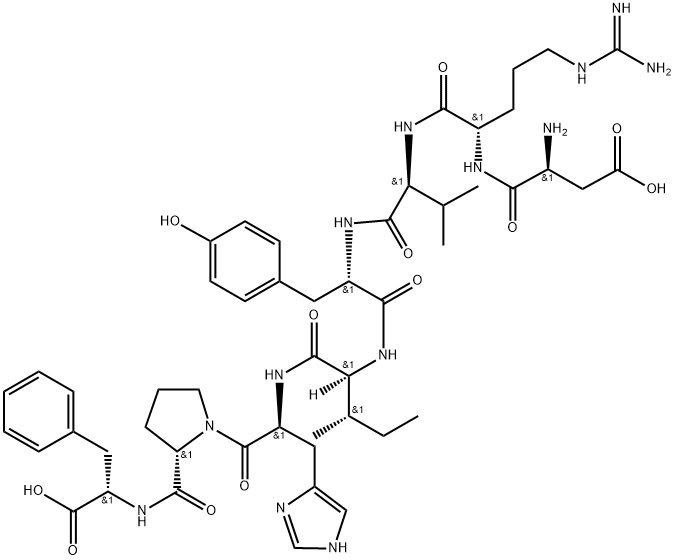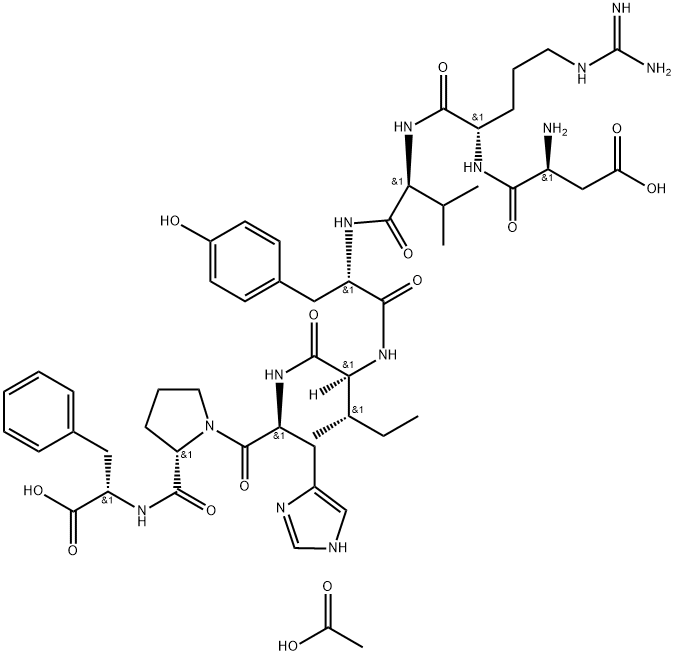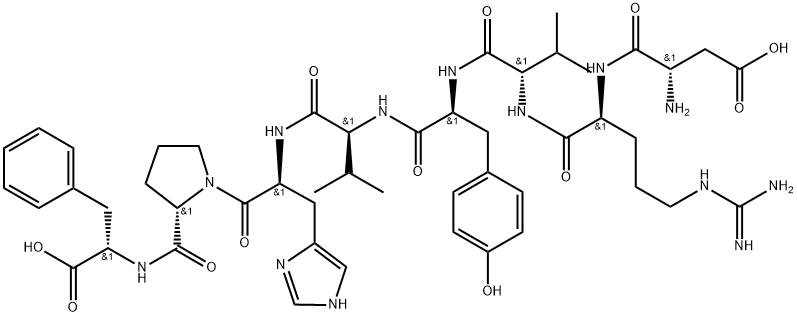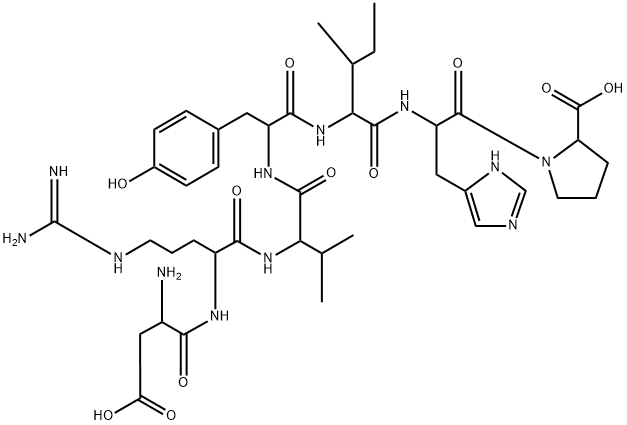Angiotensin Ⅱ, human , 90% , 4474-91-3
Synonym(s):
Ang II;Angiotensin 2;Angiotensin II;Angiotensin II, Human - CAS 4474-91-3 - Calbiochem;DRVYIHPF
CAS NO.:4474-91-3
Empirical Formula: C50H71N13O12
Molecular Weight: 1046.2
MDL number: MFCD00161484
EINECS: 2017-001-1
| Pack Size | Price | Stock | Quantity |
| 5MG | RMB239.20 | In Stock |
|
| 10MG | RMB399.20 | In Stock |
|
| 25MG | RMB559.20 | In Stock |
|
| 100mg | RMB1599.20 | In Stock |
|
| others | Enquire |
PRODUCT Properties
| Boiling point: | 809.08°C (rough estimate) |
| Density | 1.1257 (rough estimate) |
| refractive index | 1.6700 (estimate) |
| RTECS | BW2165000 |
| storage temp. | Keep in dark place,Inert atmosphere,Store in freezer, under -20°C |
| solubility | insoluble in DMSO; insoluble in EtOH; ≥100.2 mg/mL in H2O |
| form | Powder |
| pka | pK1: 10.37 (25°C) |
| color | orange |
| biological source | human |
| Water Solubility | Soluble in Water (25 mg/ml), and 5% Acetic Acid (1 mg/ml). |
| Sequence | H-Asp-Arg-Val-Tyr-Ile-His-Pro-Phe-OH |
| Stability: | Hygroscopic |
| InChIKey | CZGUSIXMZVURDU-JZXHSEFVSA-N |
Description and Uses
It is known that tumor tissues including metastatic lymph nodes are composed of newly growing vessels which lack blood flow autoregulation and are influenced only secondarily by the responding somatic vessels. Human angiotensin II (AT II). a vasopressor, was introduced in Japan to improve the efficacy of systemic chemotherapy. In patients with various advanced cancers, i.v. infusion of AT II to achieve a mean blood pressure of 1.5 times of baseline (but not over 150 mm Hg) followed by a bolus injection of conventional cytotoxic agents increases blood flow 5-7 fold in tumor tissues and therefore, increases drug delivery to the target tissue resulting in enhanced chemotherapeutic effects. This induced-hypertension chemotherapy regimen can be performed safely with minimal side effects.
Angiotensin II is a peptide hormone known best as a vasoconstrictor with central roles in chronic hypertension, heart failure, and stroke. It is an octapeptide typically generated by the removal of two residues from angiotensin I by angiotensin-converting enzyme (ACE). Angiotensin II is a ligand for at least two distinct receptors, AT1 and AT2, each evoking distinct signaling pathways and physiological responses. The development of antagonists for specific angiotensin II receptor subtypes represents a valuable alternative to ACE inhibitors.
Safety
| WGK Germany | 3 |




